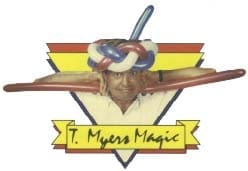Terms used in balloon fabric construction
In our daily lives we are surrounded by all kinds of fabrics. To
differentiate the myriad types, the textile industry has
defined an equally large number of terms like weaving, looping, knitting,
crocheting, knotting, webbing, lacework, meshwork, embroidery, quilting,
plaiting, felt, macrame’, braiding, and thousands more. In fact, there are
so many that you can purchase entire dictionaries devoted to nothing but
textile terms!
Since the textile industry has spent so much effort categorizing and naming
the different fabric types and their methods of construction, it only makes sense for us to
use their nomenclature and terminology when discussing the production of
balloon fabrics.
Q. Huh? What’s a “balloon fabric?”
A. In the textile world, the term “fabric” encompasses all textile
manufactures which consist of basic elements (like threads or groups of
threads) that are interworked (mechanically connected) to one another. A
balloon fabric is a product made from interworked (interlinked, interlaced,
wrapped, twisted, etc) balloons, usually (but certainly not limited to)
130’s, 260’s, or 350’s. Much like interworking threads to form a tapestry
or reeds to form a basket, any number of balloons and colors
can be combined in any number of ways to form an intricate
two or three dimensional creation. Balloon fabrics are often
created to serve as decorations to hang on walls, as displays for
rooms and store windows, and as unusual costumes.
Confused? Well, since a picture is worth a thousand words,
here
are some pictures of sculptures made of balloon fabrics.
Q. Are you talking about “weaving?”
A. It’s true that “weaving” is the term we’ve been using, but before
balloon fabric becomes any more popular, we need to adopt some
nomenclature; preferably the proper, established, accepted nomenclature
that is already in use the world over. With this document I hope
to prove to you that we should drop the term “weaving” from our balloon
vocabulary.
Q. Hey, this is a crock. Making balloon creations like the
sunbursts and lanterns in Marvin Hardy’s “260Q Decorator” is just like
making baskets. You know… basket-WEAVING! I oughtta know, I majored in
it in college in the 60’s…
A. Actually, that area of textile manufacture is called “basketry” or
“basketmaking” and it too makes use of a wide variety of construction
techniques. True; basketmakers do call one of their many techniques “weaving,”
but basketry weaving really does not meet the strict textile industry
definitions of weaving. If you are interested in a unique set of terms and a
classification scheme that works for all textiles, considering basketry to
be a field unto itself causes nothing but problems.
In
Emery’s book, the industry standard for textile classification,
you will find an extensively
researched essay on this issue. Unfortunately, it is too long to type in,
so here is a summary:
Basketry – Cloth (p 208-210)
…It is much easier, of course, to distinguish a basket from
a piece of cloth than to define the delimiting characteristics
of either term, basketry or cloth. …the terms “basketry” and
“cloth”… are broadly generic and actually refer to fabric
groupings that overlap in so many areas that neither group can
be properly studied nor understood without reference to the other.
The relationships between them are far more numerous than the
differences, and while it is often relatively easy to distinguish
individual examples as one rather than the other, separation of
the two groups is necessarily arbitrary. The habit of treating
them as disparate subjects for investigation has led unhappily
to the use of different terms for identical structures, as well
as frequent failure to recognize and record structural identity
or similarities in closely related fabrics that happen to have
been relegated to separate categories.
So, how does Emery distinguish basketry from cloth? Her tome proposes that
it hinges on whether or not the result is pliable (Easily bent or folded;
flexible, supple, yielding; easily molded or shaped, plastic. Flexible in
character; conformable). She writes:
…it would seem reasonable as well as practical to conclude
that “basketry” in general comprises fabrics which, due to the
inherent inflexibility of some or all of their component
elements, have little or no pliability; while in “cloth” there
are no inherently rigid or inflexible elements…
I submit that any balloon fabric is necessarily pliable, and therefore
should not be considered “basketry.” As an aside, Emery points out a
similar problem between terms used in basketry and lacework:
Lace – Basketry (p. 56)
The terms “lace” and “basketry” describe two qualitatively
divergent developments of fabric art which have many techniques
and structures in common, but share almost no terms…. The
detailed terminology of lace reflects the history and geography
of its development, and is based more on place association than
technical features. …[Basketry’s] nomenclature is usually more
or less descriptive of structural types and variations, although
the use of terms is not standardized….Specialists in all fields make use of many special terms
which are of value and significance chiefly to fellow specialists.
But inasmuch as there are structures common not only to the
divergently developed fabrics of lace and basketry but also to
the less elaborately specialized fabric forms, it is important
to have terms in common by means of which the structural
relationship between fabrics of otherwise unlike qualities may
be known. The need for terms which are applicable and
understandable in different fields is heightened by the lack
of agreement among specialists on the use of terms in their
own special fields!
The terminology problem:
What Marvin, Adrienne, Larry, Royal & Patty and others are doing is _not_
“weaving” in a strict sense (because there is no “warp” (fixed, tensioned
thread system) and no “loom” to mechanically form at least two separate
“sheds” in the warp.)
In addition to the few methods currently in use, there are many, many
different constructions and techniques that can be used to produce balloon
fabric.
If balloon fabric construction continues to advance without reference to a
classification system, we will have more and more constructions with
non-descriptive names like “Gymping,” and we will create a new set of
problems analogous to those mentioned above with cloth, lace and basketry.
The solution for balloon twisters:
- Use the proper, established, accepted nomenclature that is already in use
the world over. The current techniques are more correctly termed
“plaiting,” “linking,” or “braiding” (methods of fabric manufacture which
require no mechanical aids or implements.) For example,
on the cover of of the T. Myers catalog, Tom is wearing a hat that
would be termed a “three element balloon braid.”

- When you use another construction technique, find the correct terminology
by matching it with the selected pictures and descriptions
below. If you can’t find a match there, go to the library and
look it up in the extensive books by Emery or Seiler-Baldinger. - Use “plaiting” when you want a single, catch-all term to use in
place of the word we have been using (weaving). For example: -
A blanket “plaited” from balloons would be termed a “rectangular-shaped
balloon fabric.”A Christmas stocking “plaited” from balloons would be termed a
“tubular balloon fabric.”A spider web “plaited” from balloons would be termed a “circular
balloon fabric.”
The solution for the anthropologists and technical-writers:
Depending on which classification scheme you choose to adopt, the Marvin
Hardy/Larry Moss sunburst/lantern construction method is
- according to Seiler-Baldinger: “Half-plaiting in which the interworking
is looped wrapping.” - according to Emery: A two-single-element structure, comprised of a
single “active” or “sewing” element progressively wrapping a single
“passive” foundation element) - in basketry: “Basketry weaving using “weavers” wrapped around “spokes.”
and Royal & Patty Sorell’s “Gymping” technique is
- according to Seiler-Baldinger: “Linking and Twisting”
- according to Emery: “twisted plaiting, or interlinking with twisted links”
- in basketry: “a variation of plaiting”
and Tom Myers’ Hat is
- according to Seiler-Baldinger: “Multistrand Plaiting (Braiding)”
- according to Emery: “Oblique Interlacing (Braiding)”
- in basketry: ????
Proof
Some dry text follows. However, the pictures in the sections below
(especially the excerpts from Emery’s and Seiler-Baldinger’s books) will give
you a feel for the different fabric construction techniques that can be
used with balloons. Many of these textile techniques have never before been
applied to balloon fabrics. Study them and be the first on your block
to make use of them!
- In this section we present some excerpts that emphasize the differences
between weaving and plaiting.
Here is how Mary Lois Kissell explains the differences between plaiting and
weaving in her book.
Here is a textile textbook’s description of braiding/plaiting and weaving.
Here is a textile textbook’s description of braiding/plaiting and weaving.Here is a textile textbook’s description of braided fabrics.
Here is a textile dictionary’s definition of plaiting.
Here is a textile dictionary’s definition of weaving.
Here is another textile dictionary’s definition of weaving.
Here is a basketry textbook’s description of braiding/plaiting and weaving.Q. OK, OK, enough already! You’ve convinced me that it should have
been called “plaiting” all along. But people understand what I’m talking
about when I say “weaving.” Why should I call it “plaiting?” It sounds
like what’s on cheap jewelry.A. Well, I’ll answer that with a question: How many legs does a dog have
if you call a “tail” a “leg?” Exactly four. Calling a tail a leg
doesn’t make it one, and besides, people are gonna look at you funny if you
call tails “legs.”Finally, there’s no extra “i” when you talk about “gold plating”.
-
Contained here are some excerpts from Annemarie Seiler-Baldinger’s book which deal
with classification of the techniques for production of fabrics. Here you
will find selected descriptions of different types of fabrics which could be
produced using balloons. - Seiler-Baldinger’s classification system is essentially based on techniques,
i.e. manufacturing methods. However, another classification system exists,
which is primarily concerned with the structure or texture of the
final product.
This system, described in a book by Irene Emery, has
become the standard for textile classification. Here you
will also find descriptions of different types of fabrics which could be
produced using balloons.
Last modified: 20 Oct 1997 by MB

